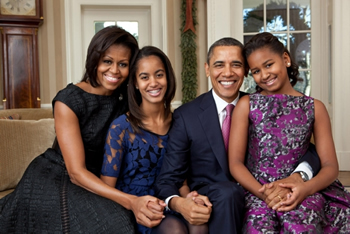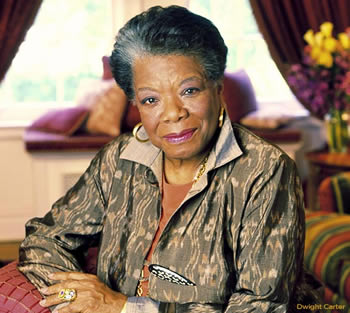From a White Colonist to a Black Councilman:
Celebrating Black History Month
For Sunday February 3, 2012
Lectionary Readings (Revised Common Lectionary, Year C)
Jeremiah 1:4–10
Psalm 71:1–6
1 Corinthians 13:1–13
Luke 4:21–30
The Jamestown colonist John Rolfe could claim three important firsts in American history. In April of 1614 he married Pocahontas — the first interracial marriage. He was also the first colonial planter to market tobacco. And then, in a letter of January 1620 to Sir Edwin Sandys, the treasurer of the Virginia Company back in London, Rolfe recorded the first known mention of blacks in America.
Rolfe's letter describes how in late August of 1619, a pirate ship named the "White Lion" landed at what is now Fort Monroe, about thirty miles from Jamestown. He says that the "Comandor" of the ship, Captain Jope, "brought not any thing but 20. and odd Negroes, which the Governor and Cape Marchant bought for victualls (whereof he was in greate need as he pretended) at the best and easyest rates they could." Four days later, another pirate ship called the "Treasurer" arrived with more Africans. These blacks ended up in America after being bought by Portuguese slave traders in Angola, then stolen by pirates off the coast of Mexico, which pirates later landed near Jamestown.
 |
President Barack Obama and the First Family. |
And so began black history in America.
Fast forward two hundred years, and the government census of 1860 identified four million slaves in America. And that was only a small percentage of a global trade in human trafficking. Beginning in 1444 and lasting over four hundred years, the European slave trade bought and sold 40 million African people.
One of the most counter-intuitive facts of history is that Africans in America adopted the Christianity of their white oppressors. And the Civil War didn't end because of Christian good will, but only after armies had slaughtered 620,000 Americans — mass death on an unprecedented and unimaginable scale.
Many of the four million slaves freed after the Civil War lived into the 1940s. During the Depression, the Federal Writers Project hired people to interview and record first person narratives from these former slaves, the last first-hand resource that could document their slave experiences. Today the Library of Congress houses 2,000 such interviews, in their original "dialect" and broken English, in the simply-titled Slave Narratives, portions of which are available on the one-hour film called Unchained Memories; Readings from the Slave Narratives (2003).
 |
Maya Angelou. |
Long after the Civil War, the Emancipation Proclamation, and the Thirteenth Amendment, what Abraham Lincoln called the "monstrous injustice" of slavery still cast a long shadow over American history. As Isabel Wilkerson shows in her award-winning book The Warmth of Other Suns (2010), the years of reconstruction gave way to a Jim Crow south that was characterized by a "feudal caste system" of lynchings, terror, torture and violence. This was one of the causes of the Great Migration — between 1915 and 1970, six million blacks migrated from the south to the American north and west. When the migration began, about 90% of blacks lived in the south; sixty years later only 50% of them did.
A picture's worth a thousand words, but no words can describe, let alone explain, the horrific crimes against humanity documented in Without Sanctuary; Lynching Photography in America (2000) — and not "just" the hangings, but burnings, castration, mutilation, and sadistic tortures like cutting unborn babies from their mother's womb. There was no due process of law in most of these lynchings, nor any attempt to hide the identity of the executioners. The US postal service even mailed commemorative post cards with pictures of lynchings. Trains provided free services to the spectacles. Between 1882 and 1968 more than 4,700 blacks were lynched.
 |
Oprah. |
But significant changes have come. The Pulitzer Prize winner Eugene Robinson explores contemporary black America in his book Disintegration: The Splintering of Black America (2010). There's no longer a single narrative that's adequate to describe America's 40 million blacks, says Robinson. Instead, black America has experienced a radical "disintegration" that is both hopeful and dispiriting. He suggests that black America has fragmented into four distinct groups that are "increasingly distinct, separated by demography, geography, and psychology. They have different profiles, different mind-sets, different hopes, fears, and dreams."
There's an enormous black middle class that has entered America's mainstream. Robinson calls this a "miracle." In 1967, only 25% of black households had a median income of more than $35,000; by 2005, that figure had nearly doubled to 45.3%. The percentage of black households earning more than $75,000 increased from 3.4% to 15.7%. In education, during the same period, high school graduation rates for blacks increased from 29.5% to 83%, effectively achieving parity with white graduation rates of 87%.
Then there's a black elite that Robinson calls "transcendents," like Oprah, Obama, Condi Rice and Colin Powell. There have always been isolated, individual black elites, but now there are enough of them to comprise a "critical mass" that wields influence in every sector of society. Third, there are "emergents," made up of two distinct groups — immigrants from Africa and the Caribbean, and then blacks in biracial marriages (which only became legal in all states in 1967). Finally, there are the "abandoned," symbolized in the events of Hurricane Katrina. The abandoned are "profoundly isolated," and because of this have created their own "cultural ecosystems." They need nothing less than an aggressive "domestic Marshall Plan."
 |
Michael Tubbs graduates from Stanford. |
This Friday marks the beginning of Black History Month. Despite our dark history, there's much to celebrate — like the recent story of Michael Tubbs. Michael was born to a teenage mother and an incarcerated father in Stockton, California. With 300,000 people, Stockton was the largest city in America to declare bankruptcy in June 2012. Last spring Tubbs graduated from Stanford, where he won the Dinkelspiel Award for the university's highest distinction. In November, at the age of 22, he won election to Stockton's city council. It's always easy to curse the darkness; Michael Tubbs is shining a light.
Resources for Black History Month at JwJ:
Books
- Malcolm X; A Life of Reinvention (2011)
- Mightier Than the Sword; "Uncle Tom's Cabin" and the Battle for America (2011)
- The Long Walk to Freedom; Runaway Slave Narratives (2012)
- The New Jim Crow; Mass Incarceration in the Age of Colorblindness (2010)
- The Ties That Bind; A Memoir of Race, Memory, and Redemption (2009)
Movies
- Django Unchained (2012)
- Eyes on the Prize (1987, 1990), a 14-hour (7 DVDs) PBS documentary on the American Civil Rights Movement
- Lincoln (2012)
- Precious (2009)
- The Help (2011)
Poetry (click here for our poetry page, then scroll down to the poet)
- Maya Angelou
- Paul Dunbar
- Langston Hughes
- Martin Luther King
- Phyllis Wheatley
Image credits: (1) WhiteHouse.gov; (2) MayaAngelou.com; (3) Oprah Radio; and (4) MDTubbs.com.





